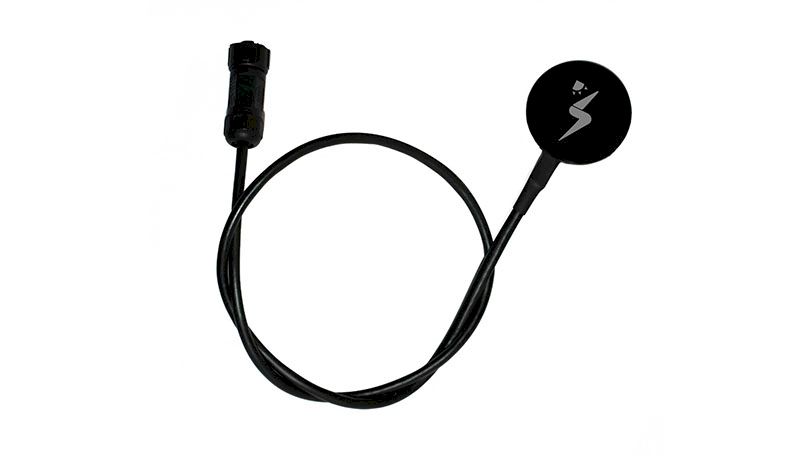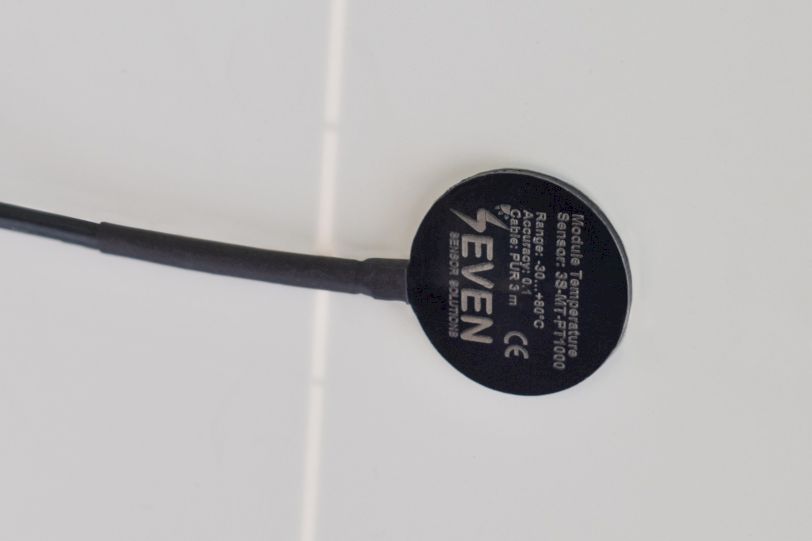Your cart is currently empty!
What is a Module Temperature Sensor? Why it is important in PV Installations?

Panel or module temperature sensors play a crucial role in photovoltaic (PV) installations, contributing to the overall efficiency and performance of solar energy systems. These sensors are designed to monitor the temperature of solar panels, providing useful data to optimize energy production and ensure the sustainability of the solar installation.
The Basics and attachment location of Module Temperature Sensors as per IEC 61724-1 standard:
Module temperature sensors are devices placed at the back of Module (BOM) to measure the temperature of the photovoltaic cells. These sensors generally use materials that are sensitive to temperature to accurately measure the temperature of the panel. The data collected by these sensors is then transmitted to the system’s monitoring unit for analysis.
“The Module temperature sensor location should be at the center of a cell close to the center of module, avoiding boundaries between cells. “ IEC 61724-1 :2021
Based on established standards, the type of sensor recommended for permanent measurement of module surface temperature is one equipped with flat probes specifically designed for prolonged surface measurements. In accordance with these specifications, SEVEEN SENSOR manufacturing process involves the production of module temperature sensors with flat probes constructed from resilient materials that withstand the impact of temperature variations, humidity and ultraviolet radiation.
In the 2021 update, Section 9.1 of the IEC 61724-1 discusses the temperature of PV modules, stating that: For bifacial modules, rear-side temperature sensors and wiring shall obscure < 10 % of the area of any cell, and wiring should be routed in between cells when possible. Temperature sensors shall have a measurement resolution ≤ 0,1 °C and uncertainty ± 1 °C or better. This requirement aligns with the SEVEN Module temperature sensor, utilizing a PT1000 probe laminated between EVA film and two Tedlar Backsheets. The 3S-MT module temperature sensor has the same construction of PV modules, sharing the same heat transfer characteristics at the back of module, and features a resolution ≤ 0.1 °C and uncertainty of ±1 °C.

Module Temperature Importance in PV Installations
- Performance Optimization
One of the main reasons why module temperature sensors are essential is their role in optimizing the performance of solar panels. From a technical standpoint, the performance ratio (PR) of a photovoltaic installation is closely linked to the module temperature. In other words, for an accurate calculation of the PR, it is essential to obtain exact measurements of the module temperature.

Photovoltaic cells are sensitive to changes in temperature and their efficiency decreases as the temperature rises. By monitoring the temperature of the panels, adjustments can be made to maximize energy production under varying environmental conditions.
- Preventing overheating
Excessive heat can reduce the efficiency of solar panels and damage them in the long term. Module temperature sensors provide real-time data, enabling the system to implement cooling mechanisms or adjust the angle of the panels to prevent overheating. This proactive policy maintains optimum operating conditions, guaranteeing constant energy production.
- Durability of the system
High temperatures can lead to accelerated solar panel degradation over time. By constantly monitoring Module temperatures, system operators can implement actions to reduce thermal damage. This contributes to the sustainability of the photovoltaic system, protecting the investment and reducing maintenance costs.
- Adjustments to weather conditions
Solar panels are exposed to changing weather conditions, including temperature fluctuations. The modules’ temperature sensors allow the solar system to adapt to these changes, making real-time adjustments to maximize energy capture over different seasons and weather patterns.
In general, module temperature sensors are essential in photovoltaic installations, helping to optimize performance, prevent overheating, ensure durability and adapt to weather conditions. As the solar industry progresses, these sensors are becoming essential to the efficiency and operation of panels, making their implementation vital to unlocking the full potential of solar energy systems.